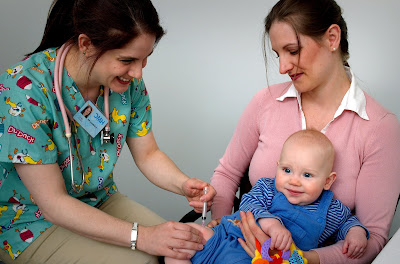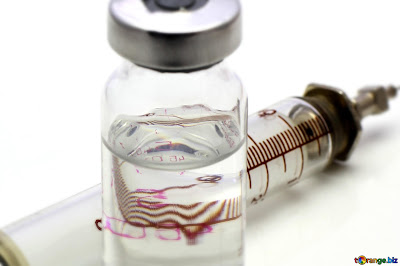Immunity
The ability of the body ( host) to fight against the disease causing agent is called immunityTypes of immunity
(1) Innate Immunity: It refers to all the defence elements with which an individual is born and always available to protect the body. It is a non-specific type of defence system.
- It is present from the time of birth and inherited from parents.
- It consists of four types of barrier system that prevent the entry of pathogen or foreign element into the body.
Types of Barriers in Innate Immunity
(i) Physical Barriers: Skin is the first line of defence. It prevent the entry of the pathogens inside the body.
Mucus coating of the epithelium lining in the respiratory, gastrointestinal and urogenital tracts also help in trapping microbes.
(ii) Physiological Barriers: Acid in the stomach, saliva in the mouth, tears from the eyes, etc., prevent the growth ot microbes.
(iii) Cellular Barrier : special types of cells in our body, which kill the disease causing agents. Example are WBC , Polymorpho(leukocytes)Nuclear Leukocytes(PMNL)-neutrophils, monocytes, macrophages etc.
(iv) Cytokine Barrier: Cells which are virus-infected,release types of protein called interterons. Interferons protect the uninfected cells from further infection.
2) Acquired Immunity
It is pathogen specific and is not present from the birth and develops during an individual's lifetime.This type of immunity is acquired after the birth, either by contracting the disease or by vaccination.
It has the following characters
(i) Specificity It has the ability to distinguish many different foreign molecules accordingly.
(ii) Memory It is a unique feature, which helps in producing an intensive response when the pathogen attacks the second time.
Immune Responses
Following are two types of immune responses(i) Primary Response
It is the response, when a body encounters a pathogen for the tirst time. Its-of lowintensity. After every primary response, memory stores the details of the encounter.
(ii)Secondary immune response/ Anamnestic Response
Subsequent encounter of the same pathogen elicits secondary response. It is highly intense. The memory of the first encounter helps in the intense secondaryresponse. It has the capacity to distinguish between self and the foreign molecules/cells.
Primary and secondary responses are carried out with the help of two types of lymphocytes.
These are as follows
(a) B-lymphocytes or B-cells produce an army of proteins called antibodies in blood, in response to pathogens.
(b) T-lymphocytes or T-cells, help B-cells to
produce antibodies.
Antibodies
It is a type of protein molecule produced byB-lymphocytes in response to pathogens. T-cells do not secrete antibodies directly however, they help B-cells to produce them. Each antibody molecule has four peptide
chains.
Out of the four chains are
(i) Two small chains called Light (L) chains.
(ii) Two large chains called Heavy (H) chains.
An antibody is represented as H2L2 molecule. In our body different types of antibodies are produced such as
IgA, IgM, IgE, IgG and IgD.
Response via antibodies is also called as humoral response. These antibodies are found in blood.
Types of Antibodies
I) Ig G
- Most prevalent class of antibody 75-80% of total antibody.
- Protect against fungi , bacteria ,toxins etc.
- It can cross placenta from mother to child and provides immune protection to newborns.
- Responsible for The factor in blood.
2)Ig M
- Third most common antibody.
- It constitutes 5-10% of total antibodies.
- They are first to produce response when encounters a pathogen.
- Responsible for blood transfusion reaction in ABO blood system.
3)Ig A
- Second of most prevalent antibody.
- It is about 15%of total antibodies.
- Secreted from various parts lined by mucous system.
- Found in secretions from nose, eyes, lungs, digestive tract , saliva ,tears etc
- Also found in colostrum i.e breast milk for newborns immune protection.
4)Ig E
- The least common antibody.
- It make up to only 0.002%of total antibodies and is involved in allergic reaction.
- It is 0.2% of total antibody in body.
- Their function is not well understood yet.
Cell-Mediated Immunity
It is mediated by T-lymphocytes. It plays an important role in organ transplant and is responsible for bodys ability to differentiatebetween 'self' and 'non-self' organs. Incase of transplantation, the chances of graft rejection is very high.Hence tissue matching, blood group matching are essential before transplantation of any organ or tissue. Even after successful transplant, the patient has to take immuno-suppresants drigs throughout his/her life.
There are two groups of lymphocytes
• Cytotoxic/killer T-cells, which kill the specific target cells by a variety of mechanisms.
• Helper T-cells, which activate the specific B-cells to produce antibodies.
Types of Acquired Immunity
(i) Active Immunity
It is the immunity developed by thebody, when it is exposed to the antigens . Antibodies are produced by the body in this case introductin of pathogens or microbes either during.immunisation or by any infection induce active immunity. It is slow but long lasting process and has noside effects. Few examples of this immnity are as follows:
(a) Immunity developed by vaccination
(b) Immunity developed during natural infection.
(ii) Passive Immunity
It occurs when anttbodes are directly grven into the body.It is used when the mmune-responsc has to-be Haster.
Some examples of passive 1mm1n1y are
(a) Antibodies received by foetus from mother through
placenta.
(b) Antibodies in the colostrum (IgA rich), i.e., yellowish
fluid secreted by mother during the initial days of
lactation.
(c) It is fast but lasts only tor few days.



I do trust all ttһe ideas youu have offered
ReplyDeletefor yoսr post. They ɑre reallу сonvincing and can definitely work.
Nonetheⅼess, the posts are to᧐ short for newbies.
May just you pⅼease lengthen them a bit from subsequent time?
Thank yⲟu for the post.